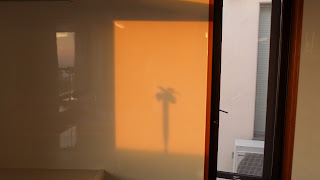There are three stages in Kumano history
1st stage BC100,000~BC660
2nd stage BC660~AC552
3rd stage AC552~ up to now
1st stage (BC100,000~BC660)
"Nature"
Kumano history started at BC100,000. At "Joumon" era.
People pray for all kands of nature object, such as mountain, forest, Big stone, fall, sea, water and etc..
We still can see some of them, such as "Gotobiki-iwa , Hanano-iwaya, or Nachino-taki .
 |
| Hanano-Iwaya |
 |
| Gotobiki-Iwa |
 |
| Nachi Fall |
2nd stage (BC660~AC552)
"Shintoism"
After Yamato imperial court has taken power in Japan, so called "Shinto" has become a target of faith of nation.
People prayed at shinto shrine for their faith.
Among shrines that we can see today, "Takaharakumano -jinja" is said one of the oldest shrine along Kumanokodo. It has build around AC1400.
 |
| Kumano Hongu Shrine |
 |
| Takahara Kumano Shrine |
3rd stage (AC552~up to now)
"Shintoism & Buddhism"
552, Buddhism has come from China.
Imperial court has put "Shinto" and "Buddhism" combined together and set as national target of faith.
As a result people prayed at "Shrines" and "Temples" for their faith.
"Seigantoji" is a buddhism temple build in "Kumano Nachi Shrine".
Even though at "Meiji era, there were many movements such as "Jinja Goushi", "Haibutsu Kishaku", "Shinbutsu Bunri",
and while other part of Japan, "Shinto" and "Buddhism" were separated each other, present Kumano religion is keeping the form of "Shinto" and "Buddhism" combined.
 |
| Seigantoji (Buddhism Temple) build in Kumano Nachi Shrine |
 |
| Kumano Hayatama Shrine |
 |
| Kumano Nachi Shrine |
 |
| Kumano Hongu Shrine |
"Nature" the treasure
Despite of the fact that people go for worshipping their wishes to either shrine or
temple, real treasure of Kumano today is the nature it's self. Having myself at Kumano, I can feel breeze of wind, breath of tree, so many colors of green leaf.
Please visit Kumano at any time.

























